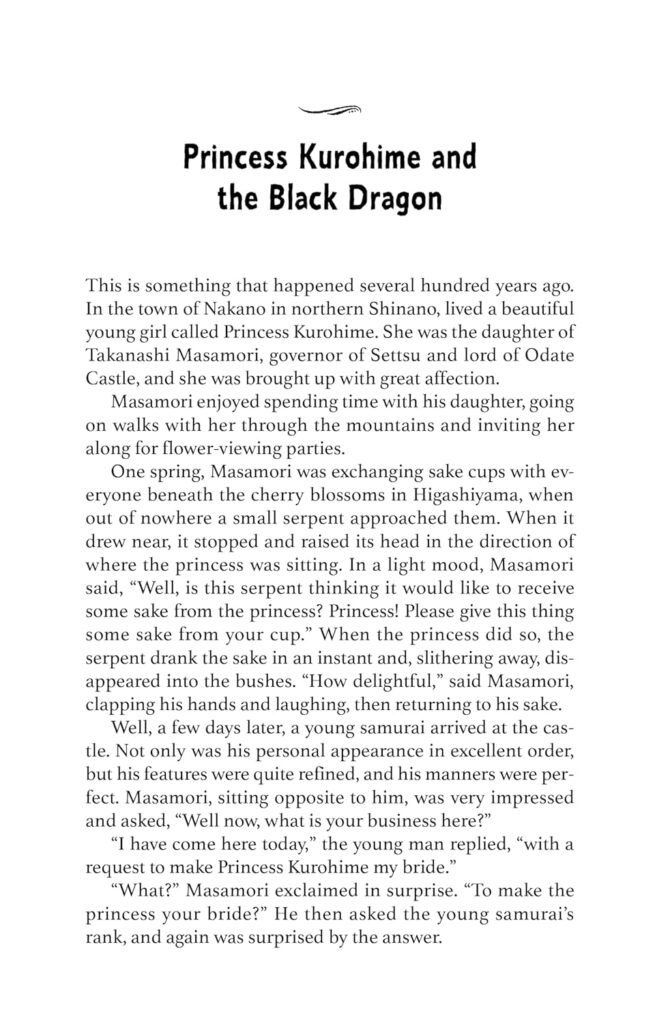Do you remember a couple of years ago when Yo-Kai Watch became a semi-phenomena outside of Japan? For a moment there were a couple of the cool, elementary kids, who were down with a magical watch that allowed them to see ghosts and monsters. The Snow Woman and Other Yokai Stories From Japan is jammed with 77 short stories about ghosts, spirits, mysterious people, samurai, and a handful of recent stories that blur the line between reality, paranoia and tall tales. Japan is an ancient country with thousands of years of history that has yielded stories still woven into folklore and pop culture today. These stories survived for so long due to being handed down or told from one generation to the next. It wasn’t until modern times that these stories, as well as, folktales from other cultures, were written down.

The stories in The Snow Woman are a collection of these folktales, succinctly written in a way that’s short enough to get their power across without being too wordy or intimidating to reluctant readers. Imagine an engaging, spooky story that can be told around a campfire that gives the audience enough to let their imagination fill in the scarier attributes of the tale. An interesting aspect of folktales, regardless of where they come from, is that they’ll have subtle variations that have happened over time or due to regional changes. The titular Snow Woman in the book might have small changes based on where the narrator came from and how it was told to them initially.

All of the stories in the book take place in Nagano Prefecture on the big island of Honshu. It’s a very mountainous region whose roads back then were scarcely traveled and laden with thick forest on all sides. There’s a very brief chapter at the beginning of The Snow Woman that sets up the region, how this area of Japan helped shape the stories, how the countries’ isolation led to the stories being so resilient and even an overview of some of the Japanese language that’s used in the book. Readers do not need to read this chapter to enjoy The Snow Woman. On a surface level, the individual stories can be enjoyed by just reading them and can be done so without knowing anything about Japanese culture or history. That introductory chapter is for those who really want a thorough understanding as to why, or how the stories have related to the population for as long as they have.

There are also dozens of black and white illustrations that merge anime, and Monty Python-esque images into the stories to set them up or seque between chapters. Every story does not have one and their use, much like the truncated language that each story is written with helps add to the mystery that your mind will create. The folktales in The Snow Woman are not all scary. Some of the stories have a lesson or a moral, but don’t it in a preachy manner.

To help classify the stories to some degree they’re compiled in a series of chapters that range from dragons, shape-shifters, plant life, demons, relatively modern yokai and more. A benefit that’s created in having the stories so brief is that you can read a couple of them, and then take a break. Most likely, this is not the sort of book that you’d read cover-to-cover in one sitting. The age and history in these tales are in the space and the details that aren’t stated. The scarier, more contemplative and subsequently, the better movies are the ones that don’t spell things out in an obvious manner, and the same is true here.
The stories in The Snow Woman work best when they have a moment to breathe and be enjoyed. If you read too many of them back-to-back then it’s likely that their power and enjoyment will be muted. As with any folktale, there are similarities and tropes in the themes that run in them. In The Snow Woman, it’s a villager who lives in the country and encounters someone or something mysterious that might not be what they appear and will probably teach them a lesson by what they give them or take away.

It’s the details in The Snow Woman and Other Yokai Stories From Japan that make it fun to read. You don’t need to be a Japanophile in order to enjoy them. Any country has stories similar to these, with mysterious situations, potentially spooky things and monsters that are hopefully there just to teach us a lesson and not drag us to the dark corners of your nightmares. The feeling of these stories is homemade jam, as opposed to corporate jam that is BOGO every other week at your local supermarket. It’s at atmospheric collection of stories that satisfies the armchair yokai warrior that exists within all of us, some more than others.
The Snow Woman and Other Yokai Stories From Japan is by Noboru Wade, has illustrations by Haruna Wade, is translated by William Scott Wilson and is available on Tuttle Publishing.
There are affiliate links in this post.





 Facebook
Facebook Twitter
Twitter Flickr
Flickr GooglePlus
GooglePlus Youtube
Youtube